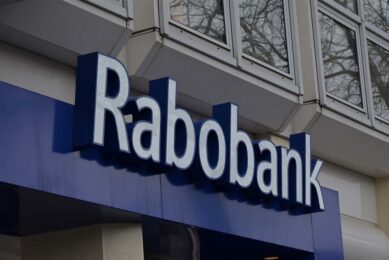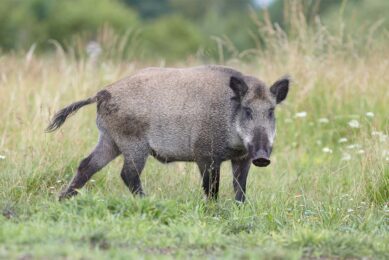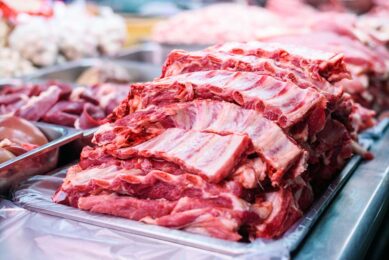Quarterly update: Pig market outlook does not look rosy

Last year, pig market expert Dr John Strak warned that it was time to be cautious about developments in 2018. Looking back, reality has proved him right – and he’s not overly optimistic for the next 12 months.
As 2018 is only just behind us, I am bound to look back before looking forward to surmising how the global market for pigs and pork may behave in 2019.
At the same point in the calendar last year I wrote, “We haven’t seen any major disease outbreaks; global trade, consumer spending and economic growth have been on the up; and there has been a favourable climate for investment. And, as evidence for the view that the global pig industry is in good heart, the 3 big exporters, USA, Canada and Denmark have all seen expansion in their breeding herds in 2017 – albeit that pig prices in these countries have been weakening in the second half of this year.
“As a whole, the EU breeding herd is also expanding (estimated from the June 2017 census results). Looking forward, the outlook for 2018 depends, perhaps, on your attitude to life, is the glass half empty or half full? It’s a time to be cautious, in my opinion: The glass is half empty and the source of a refill is not obvious.”
Contraction, ASF and international trade issues
Well, it now looks like I was right to urge caution. In the last 12 months we have seen the EU herd (as a whole) contracting; the spread of African Swine Fever (ASF) to the world’s biggest producer of pigs, China; and international trade disrupted by the actions of the president of the United States that has hit pork exports from the USA hard. For good measure, the outlook for the world economy now looks much less rosy in the year ahead.
Indeed, I still see a half empty glass in 2019 with no bartender in sight.
Figure 1 – US daily hog prices, 2015-Dec 2018 (US$ /cwt deadweight).

Key: Pink 2016; Blue 2015; Yellow 2017; Green 2018
Figure 1 illustrates how US hog prices have behaved in 2018 compared with recent years and Figure 2 presents these data going back to the year 2000. Right away we can see that the way in which US hog prices behave in early 2019 will give us a clue as to how the coming year will affect US and global hog prices.
Figure 2 – US daily hog prices, Aug 2000-Dec 2018.

Bad year for pig producers’ margins?
If we don’t see a sustained upturn in US prices in January, 2019 could be a very bad year for pig producers’ margins. Leave aside the short term outlook, the 2nd chart isn’t offering much reassurance about the direction of prices in the USA. The US hog sector has improved its productivity a lot in the last 4-5 years, but farmers will have to shift their KPIs even higher if they are to resist the downward pull of prices implied in Figure 2. The USDA’s regular hogs and pigs reports have proclaimed several record highs for hog production in 2018. My prediction is that we could see a record low for US hog prices in 2019.
Globally, hog prices have been slowly but surely dragged down by the twin pressures of increasing supply and weakening demand. Figure 3 illustrates the long term picture for my global pig price index.
Figure 3 – Global pig price cycle: Jan 2011-Dec 2018.

Prices have broken down
It’s notable that all 3 major pork exporters used in the index (USA, Canada and the EU) exhibit current prices that have broken down and through the underlying index. And that US hog prices have shown increasing weakness throughout 2018. This behaviour offers no support for the ‘half glass full’ school of thought.
There is very little, if any, signal in these data that suggests an upturn is just around the corner. My prediction is that we will have to wait until the mid-point of 2019 before these price models show conclusive proof that, on average, global hog prices are in an upward phase of their cycle. So don’t hold your breath – and watch out for the update to this quarterly report at the end of March 2019. It could be the critical weathervane for the outlook for prices in 2019.
ASF going to be a factor in 2019
But what about ASF I hear, in the shouts from the back of the audience – especially as it may be rampant in China? Well, there is no doubt that this is a factor in the outlook for 2019. We know that over 100 outbreaks have been confirmed and that the spread of ASF is wide – prompting the view that it is being spread by other vectors than live animals and animal transporters, probably also by contaminated pig feed. We also know that, although a small number of commercial pig farms have been hit by the disease there doesn’t appear to have been many of these farms affected by ASF.
That last point seems reassuring but a professor in Taiwan has recently claimed that, “China could be under-reporting the number of outbreak cases, given that there are roughly 430 million pigs in China. The number of pigs infected could be well over 100 million.”
No reliable pig base statistics in China
That’s less reassuring – and less credible at this time. But the fact remains that we don’t have reliable basic statistics in China. Total hog numbers, the size of the breeding herd, slaughter numbers, ASF outbreaks in backyard farms, are all key metrics that are, in the famous words of Donald Rumsfeld, ‘known unknowns’. The global market for pigmeat is flying blind as far as China’s statistics are concerned – all that money spent on genetics and animal health programmes in the west could yet be lost in the ‘black hole’ of Asian market information.
Price formation should capture all the economic influences and China’s hog prices have risen. But they were rising before the advent of ASF – and, more recently, the price recovery has run out of steam (see Figure 4). The only sane response to this confusing situation is to proceed with caution until the position on ASF’s impact in China is clarified.
Assessing the Chinese pig and pork market
A complicating factor in assessing the market for pigs and pigmeat in China is that it seems that there has been a squeeze on consumer incomes and faltering economic growth in China in the 2nd half of 2018: sales of cars and mobile phones are down, consumer confidence is on the wane, and consumer credit may be tightening. All these observations point to less spending power on meat proteins – which are anyway under threat from changing consumer purchase behaviour and lifestyles in China.
I wrote last year that, “…the New Year (2018) will need to find ‘another China’ to absorb increased supplies of pigmeat.” And this did happen to some extent with new markets explored by the west’s pork exporters in central and South America and in the Philippines. More ‘exploring’ will be needed in 2019.
No resurgent demand for imported pigmeat
In summary, I do not see China, even with ASF, having a resurgent demand for imported pigmeat from the west in 2019: more new markets anyone?
Figure 4 – Chinese hog price, 2009-Dec 2018 (deadweight, weekly).

Finally, we need to mention the ongoing ‘trade wars’ that were a glint in the eye of president Trump at the beginning of 2018 and that, by now, have probably stuck in the throat of many a US farmer who has been affected by the retaliatory tariffs brought about by Mr Trump’s actions.
Politics has become more important in the economic appraisal of the global market for pork. I mentioned last year that, ”…businesses in the pigmeat value chain need to factor in the uncertainty that politicians create – and their decision-making ability.”
More uncertainty than ever in the global pig market
One year on from these words I think that there is even more uncertainty than ever: not least because many of these politicians seem immune from the consequences of their actions and/or show few signs of being able to act cohesively. Volatile stock markets and disruption to established trading patterns create winners and losers. If politicians do not understand the time scale of economic adjustments and do not react appropriately to mitigate the impact of these changes in in economic drivers it would be surprising if consumer and investor confidence did not suffer.
And that means that farmers and manufacturers will suffer as demand for goods and services weakens. A New Year has dawned but, in my opinion, it does not have an auspicious outlook based upon the fundamentals of the global market for pork – or upon the players currently seen on the political stage.
As a final (optimistic) word I would argue that we may be near a tipping point for trade policy. If the key players change their behaviour, or some of the key players are changed, international trade and consumer confidence could rebound in 2019.
Meantime, buckle up!
 Beheer
Beheer









 WP Admin
WP Admin  Bewerk bericht
Bewerk bericht